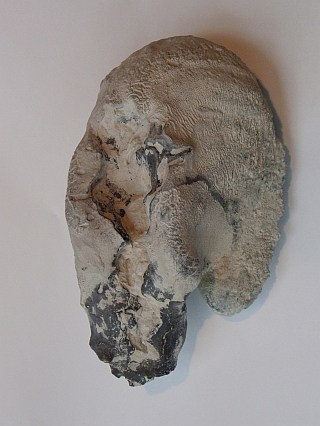
Cytoracea costata
Schrammen 1910
Cytoracea costata is a rare sponge of highly irregular shape. The specimen shown in the picture is covered with a dense, smooth cortex near its base and inside a cavernous trench. The remainder of the surface is sculptured by furrows, which are anastomosing in some areas and subparallel in others. The specimen is furnished with several jagged oscules, some 5 mm wide, near its top. The skeleton is made up of rhizoclones.
The specimen shown was originally identified as C.rimosa, but this species was found to be identical to C.turbinata by Schrammen (1924). However, the pronounced coaxial ridges suggest that this particular specimen is Cytoracea costata, not previously described from Misburg.
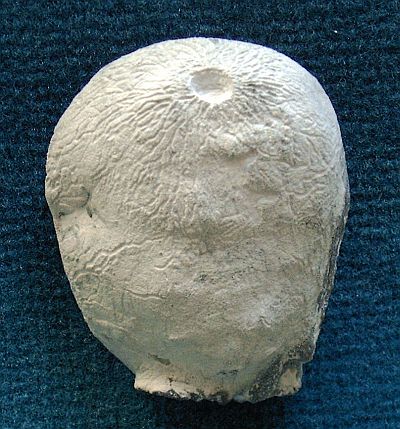
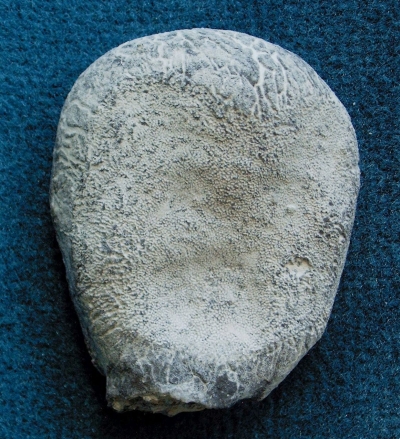
Cytoracea turbinata
Schrammen 1910
The specimen shown in the two pictures to the left is a "textbook-example" of Cytoracea turbinata.
The circular osculum is displaced to the side and surrounded by radiating and anastomosing grooves. The "backside" shows a depressed area with numerous ostia.
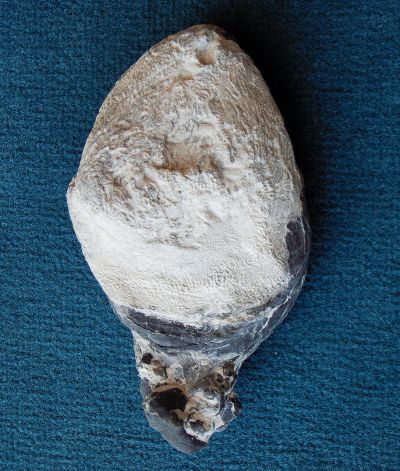
This is a second example of Cytoracea turbinata, with a well developed cortex (black)
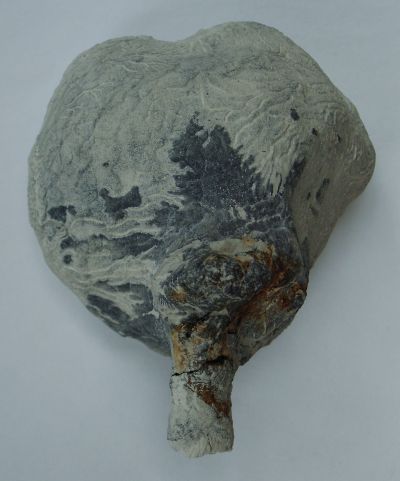
The example shown to the left has the shape of an inverted cone with a stem. As the next sample, it may serve to demostrate the considerable variability in habits.
The flat top is very rough and contains several oscules, similar to those of Cytoracea costata. The conical part of the sponge shows fields with pronounced grooves.
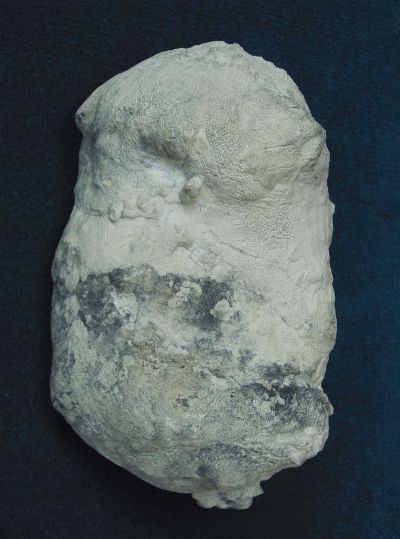
This is another example of Cytoracea turbinata, which is more cylindrical in habit. It has several short roots and shows the typical grooved surface.